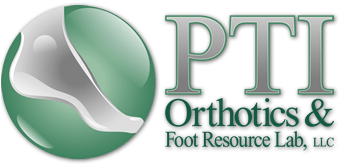Unless you are retired or a professional athlete, most likely, when you experience feet pain it is easy for you to brush it aside and continue with your day. This behavior can be detrimental to your health long-term. Orthotic shoes are created to help your feet; non-orthotic shoes are meant for status or events, or the most common reason people get them: they don’t know any better. But we at PTI Orthotics have been serving the people of Colorado for years—and being the nation’s best state for hiking, we know a little something about foot care.
Non-Orthotic Shoes Hurt Your Feet Short-Term
Foot pain can appear from a variety of sources, including from wearing the wrong or badly made shoes. This is why most businesswomen wear their heels into work and around the office, but at their desk they commonly remove them or replace them with flats. The heels give a professional status—but they hurt to wear. Further, some people experience their feet degrading, arches falling, heat blisters, growing calluses, some even wear shoes the wrong size because they don’t know how to properly fit themselves. This can create strangled feet in hikers or tripping in a construction site because of them being too big. Outside of these outer-feet issues, there are also many diseases which can come from the bones or muscles in the feet being improperly supported or maintained.
Non-Orthotic Shoes Hurt Your Body Long-Term
These sorts of diseases include arthritis, plantar fasciitis, metatarsalgia, or calcaneal apophysitis. In short, all of these diseases can occur from wearing the wrong footwear, or intense and repeated abuse of your feet. These diseases affect the entire body, not only the foot. For example, plantar fasciitis in the midfoot area, can give off foot pin pain, but that pain can stop you from walking, making the condition more exacerbated, and possibly in need of injections or surgery to relieve the pain. How we wear our shoes can change our body as well, this is why heels are tall and angular, it forces women to flex their calves for extended periods in order to stay upright in the small footprint. This can result in muscle exhaustion, which aids to rolled ankles, and the fainting of women during the workday.
Clearly, there is a lot to consider when making the move from commercial shoes to orthotics. However, making the transition is crucial for the health of your feet, and your prolonged comfort in life. If you’d like to schedule an appointment, give us a call or check out our website. If you’d like to read more about your orthotic health, you can visit our blog.

